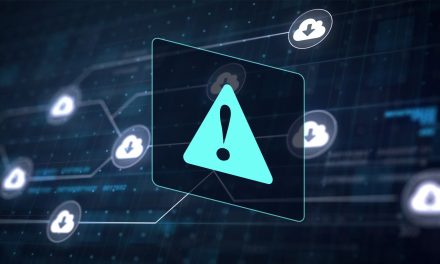In most instances, the answer is Yes, and here are some tips to address the increased attack surfaces and data security complexity…
Cyberattack incidents have been on the rise across the globe as our world becomes more digitalized and we increasingly live our lives online.
In South-east Asia, countries like Singapore are even more at risk, due to the island’s advanced technology adoption and the wealth of valuable data available. Compounding this is the fact that cyberattacks are now industrialized, with organizations undertaking these attacks for profit. Just this month, AXA was hit by ransomware attacks that compromised over three terabytes of customer data.
Against this backdrop, businesses here need to look at the big picture: What is needed to safeguard critical data in a threat landscape that is constantly evolving?
Furthermore, as businesses embrace flexible, cost-effective technologies and accelerate cloud migration with software-as-a-service (SaaS), now is the time to protect all data: in the Cloud, on-premises, and that ‘hybrid’ data that may be moving between locations today or tomorrow.
Effective enterprise-wide data management has never been more complex than now. What with the expected data volume growth with trends like 5G, IoT adoption, and of course, more data being stored in remote locations as workers work from home or remotely.
Here then, are some tips to protecting your data security with a clear vision in mind:
- Manage complexity with a single pane of glass
Increases in data volumes, changes in business needs and ongoing operational complexity are making it more difficult to apply zero trust controls effectively and universally. IT teams are under real pressure to improve data resilience, recovery and security. To manage all this complexity with a constant and clear overview, consider an intelligent, cloud-native data protection.
SaaS backup and recovery in the cloud can ease data protection challenges stemming from cloud migration. A simple-to-use, actionable dashboard will integrate and automate security controls, with minimal complexities or governance risks. - Be smart with your IT resources
When it comes to simplicity, your data protection solution should make the most of IT resources, not add to them. In this case, businesses should use a comprehensive data protection solution that supports the preferred infrastructure types, storage, and cloud platforms. This reduces both hardware and operating expenses.
For example, do you require a scale-out infrastructure to eliminate purchasing three to five years of compute and storage upfront? Scale-out allows you to buy what you need today. Also, scale-out puts an end to costly and complicated forklift upgrades whenever you refresh the hardware.
Another consideration is a solution that offers both source-side and target-based deduplication to eliminate backing up and retaining redundant data. Deduplication will lower storage costs while minimizing data management time. - Regularly test your response plans
Today, disaster recovery can refer to the ability to recover applications, databases, entire virtual machine environments or entire IT environments. It can be deployed in response to the failing of single applications, one manufacturing plant, or all your IT operations in one country.
Unfortunately, in the rush to migrate to the cloud, disaster recovery and incident response plans are often not updated. Regular checklists and testing, as mandated under the General Data Protection Regulation (GDPR), will ensure that current workloads across storage environments are all accounted for.
In that regard, immersive simulation exercises also provide realistic practice in the event of actual cyberattacks or data loss events. - Looking beyond the cybersecurity battle
Cybersecurity is not a static, technical arena. It is a dynamic, contested space that is constantly evolving, as skilled malicious actors are always trying to find new ways to get past our defenses.
The onus is on business leaders to lead this battle with vision—think of cyberattacks as a risk. In so doing, anticipate tomorrow’s business and technology needs and ensure that infrastructure is in place to provide a single, unified view across all data workloads.
Regardless of where data resides, organizations with geographically dispersed teams need a hawk-eyed approach on data protection to ensure data is safe anywhere, anytime.

















